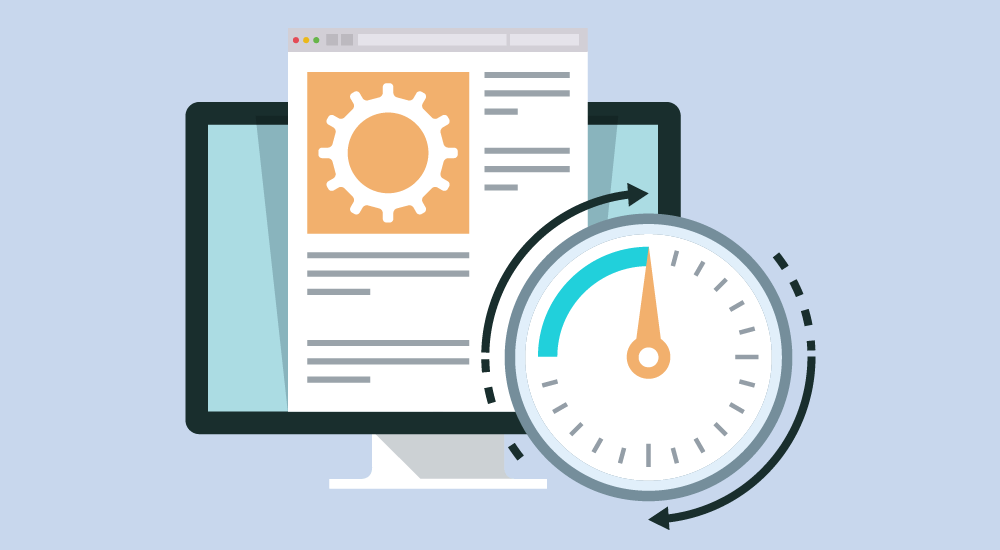When experts talk about the benefits of headless commerce, they often point to implementation speed as a primary selling point. And it is! Headless commerce is undoubtedly quicker, lighter, and more efficient than the monolithic eCommerce architecture you might be used to. But why is this the case? And what makes that so important to the user experience?
Headless Commerce Supports Faster Customer Experiences
At its most basic, headless commerce supports a fast, simple experience for online customers regardless of what channel or device they’re using (i.e. mobile web or app, social media, live chat, etc). It’s not hard to see why; it’s well-established that sluggish websites, slow page loading times, and clunky checkout processes detract from the customer experience. (And thus, your eCommerce conversion potential.) As many as 47% of customers expect a website to load in two seconds, and 40% will abandon a website that takes more than three seconds to load.
This rule is amplified in eCommerce, where you’re asking customers to transmit sensitive personal information: credit card details, names, addresses, and so on. These processes rely heavily on trust. Customers need to trust that your website is safe and secure enough to conduct their transactions, and a sluggish website can be a huge detriment to their perceptions of your site – particularly in B2B. Research shows that 75% of B2B consumers judge a company’s credibility on its web design elements, and that includes page performance.
So, website loading speed is important for business credibility. Got it. But how does headless commerce make fast loading possible?
It all has to do with the web architecture. As those familiar with the benefits of headless commerce know, the headless approach separates backend website functions from the customer-facing content presentation layer. Though it sounds simple enough on paper, this fundamental shift in architecture can speed up your pages in a big way.
Under traditional commerce architecture with a tightly integrated backend and content management system (CMS), it’s hard for companies to add functions or make changes to their eCommerce platform without influencing their CMS. They’re connected closely, and a change to one will inevitably affect the other.
This means that it’s hard to add new commerce functions without disrupting your content presentation goals. Usually, companies can’t alter the architecture directly and have to apply third-party plugins or integrations that bring new functions to the platform. Over time, these integrations stack up and create a sort of Rube Goldberg machine of eCommerce: An overly complicated system designed to perform a simple function.
Every request sent through this plugin-oriented architecture must trigger multiple steps and actions to enable the desired function. In web development terms, this translates to a sluggish eCommerce experience that’s slow to load and slow to perform. But through the headless approach, there’s no tight coordination to worry about. You can integrate new functions directly into the commerce engine as needed. This means simple web architecture, fast loading speeds, and more efficient web architecture across the board.
Key Takeaways:
- Modern customers demand quick, seamless eCommerce experiences every time they shop.
- Web design elements like page loading speed correlate with how customers perceive your company.
- Traditional eCommerce architecture often requires complicated integrations that detract from site performance.
- Headless commerce subverts architectural barriers and supports a commerce system that’s lean, efficient, and quick for all users.
Headless Commerce Supports Better SEO and Website Performance
Related to page performance and load speed, headless commerce can actually add SEO value to your websites.
Although Google’s exact algorithms are an industry secret, it’s known that page speed affects SEO. This has been confirmed by Google itself as well as reputable third-parties who have considerable expertise in verifying such things. According to Google, fast page loading speeds provide numerous benefits to site owners:
- More time spent on-site
- Better user experiences
- Lower site operating costs
(Savvy readers will note that the above benefits correlate strongly with the benefits of headless commerce itself.) But the benefits aren’t limited to technical site performance. It all comes down to the buyer’s journey and how users interact with your website.
It’s no secret that online search is an important part of the customer’s journey, regardless of what industry you’re in. Both B2B and B2C shoppers rely heavily on online resources to guide them throughout their purchasing process. In other words, potential buyers will be spending plenty of time crawling around your site, learning, and taking in the resources you have on offer. It’s a simple enough process to understand, but what happens to these buyers when every page they try to view takes five seconds, ten seconds, or more to load?
As detailed above, monolithic commerce architecture tends to be slow and sluggish. Even if prospects aren’t in your commerce storefront proper, their content browsing experience will be regulated by the strength of your CMS/backend integration. The more complicated your architecture, the slower their pages will load. This is bad enough when it comes to your storefront and shopping pages, but when it happens to customers simply trying to browse your thought leadership resources, it can be hugely detrimental to their browsing experience. In many cases, it may drive them away from your brand altogether.
This is why the quick, seamless experience of headless commerce is so important – not just for SEO value, but for your commerce goals overall. Your storefront can’t hope to compete against your biggest competitors when every blog, content asset, or product page is slow to load. It’s bad for SEO, and it’s bad for the customer experience.
Key Takeaways
- Google’s SEO algorithms prioritize websites that are quick, efficient, and fast to load.
- Traditional commerce platforms may struggle to achieve these speeds – but headless platforms are built from the ground up for efficiency.
- But establishing seamless commerce architecture isn’t just a matter of SEO; it influences every stage of the buyer’s journey.
- Companies need to understand how site performance, page loading speeds, and web architecture influence the world around them, from their customers’ experience to SEO.
- With a completely custom frontend, your technical team has more freedom to make decisions based on load time than they would with a traditional platform.
Get Started With a Stronger, Faster Type of ECommerce Architecture
Headless commerce platforms offer a workaround to traditionally-built commerce engines – one that speeds up your site performance while still letting you design your storefront exactly how you want. It’s not a new approach, technically speaking – but it’s one that’s gaining steam in the eCommerce world, and early adopters are already reaping the benefits.
Learn more about the value of headless commerce platforms. Contact Ultra Commerce for a business assessment of your eCommerce experience.


